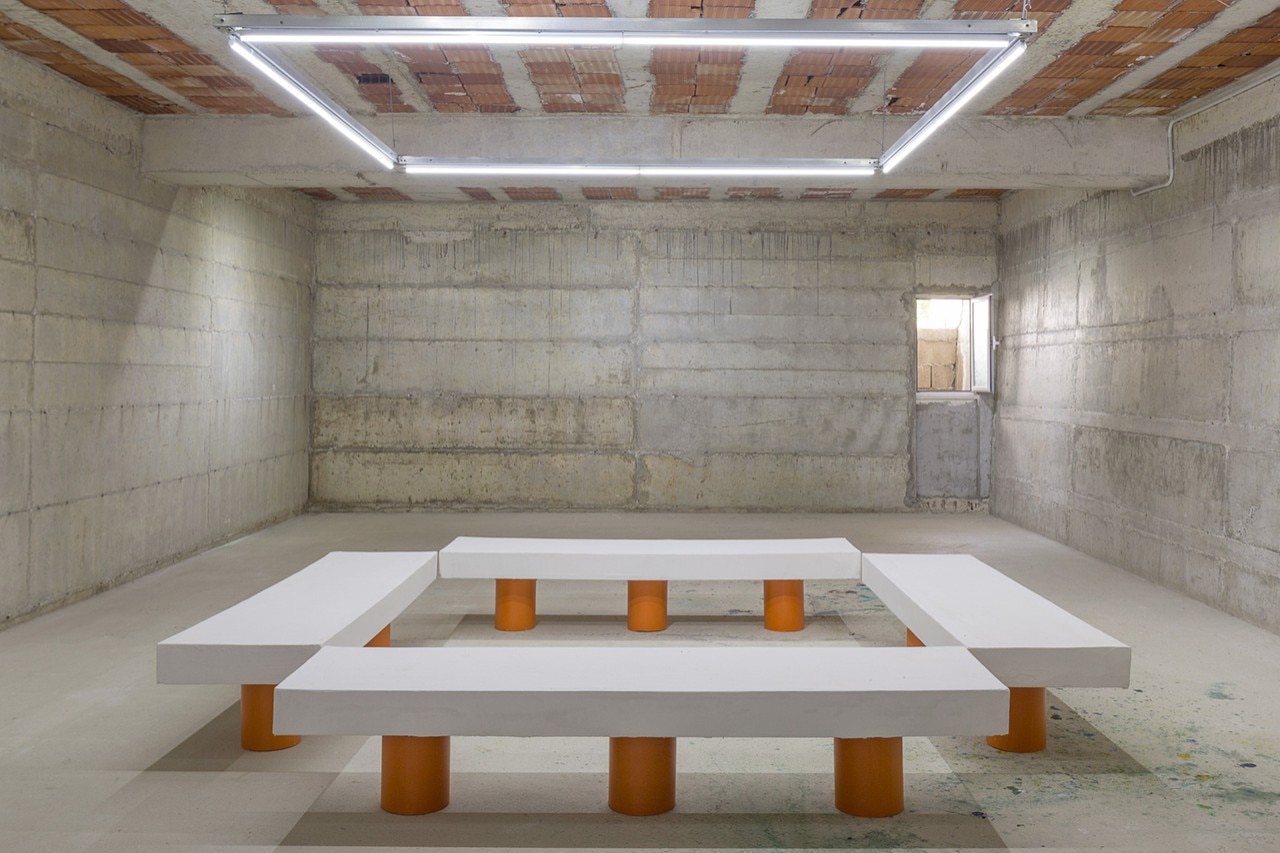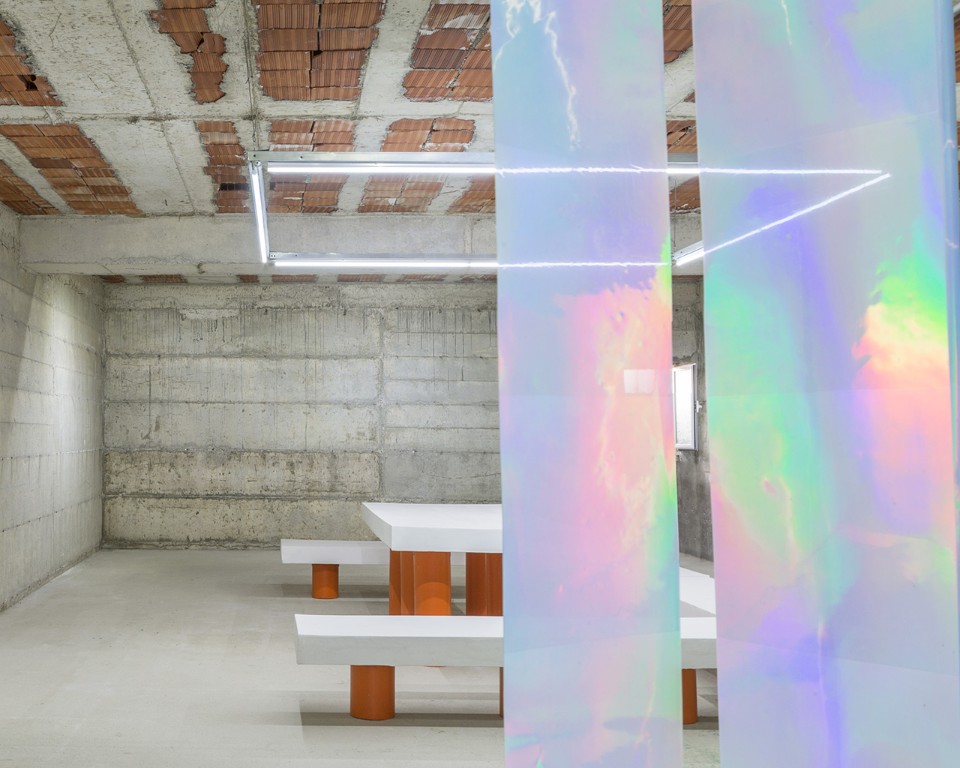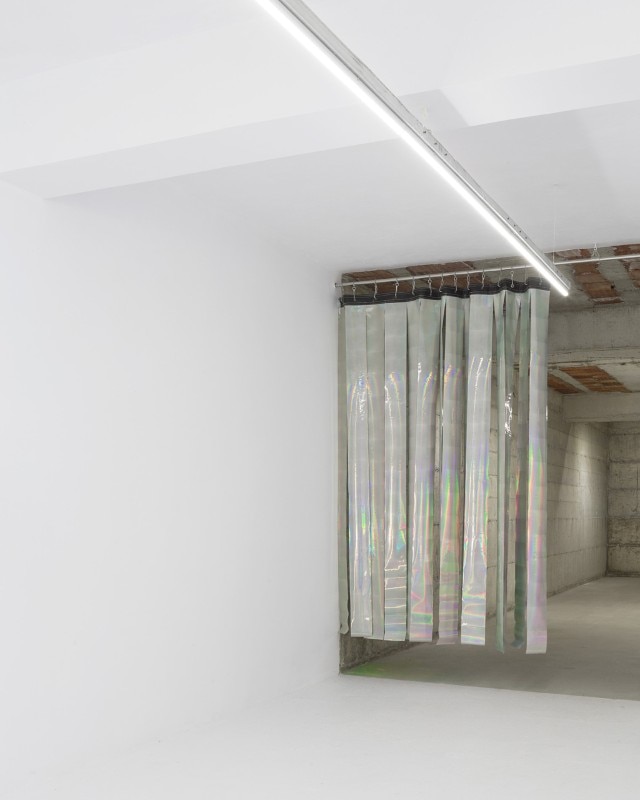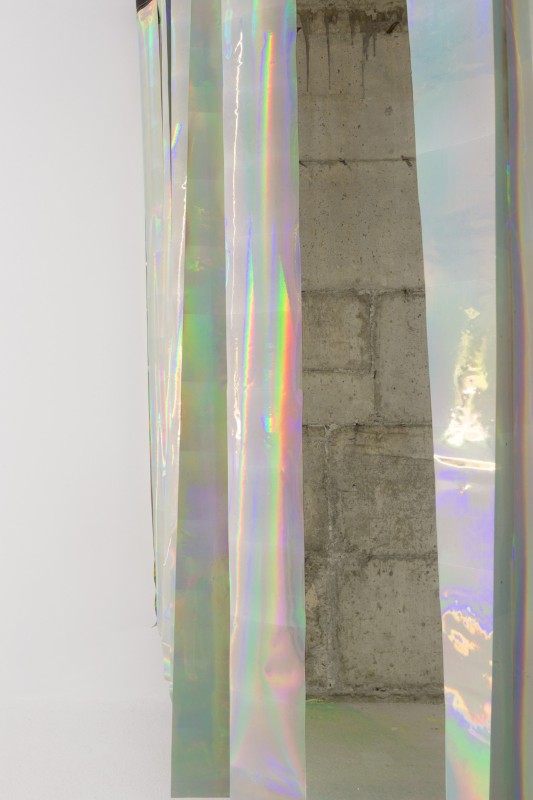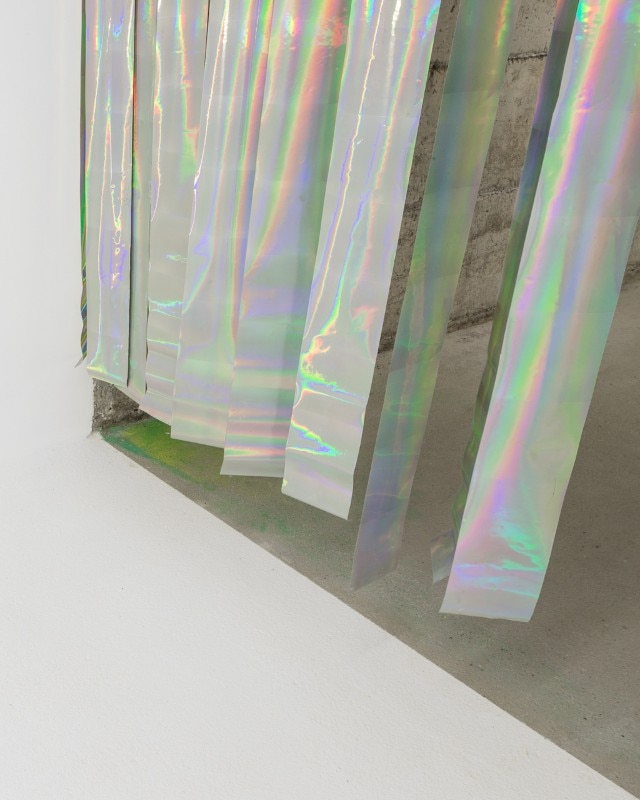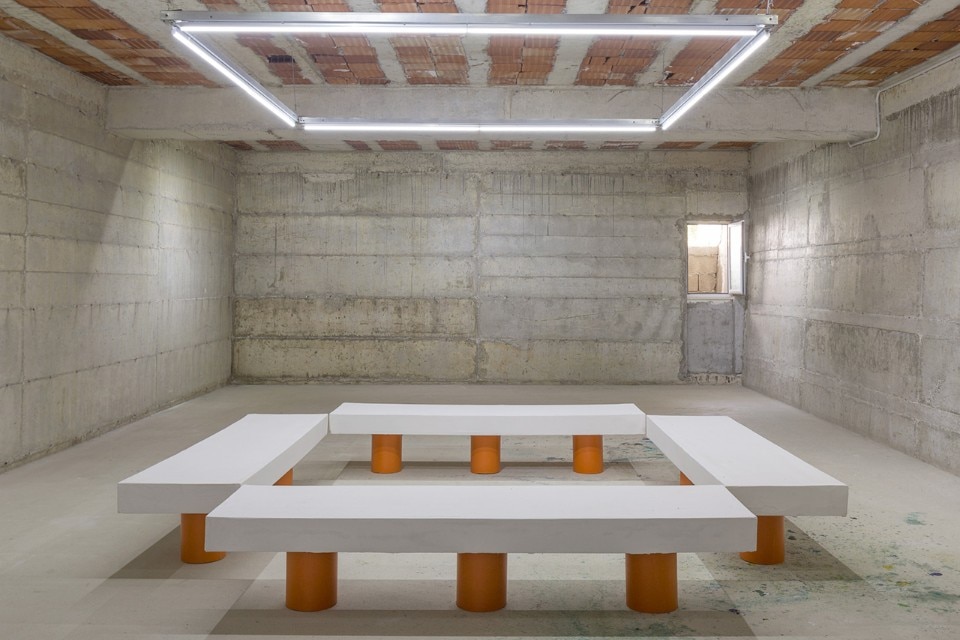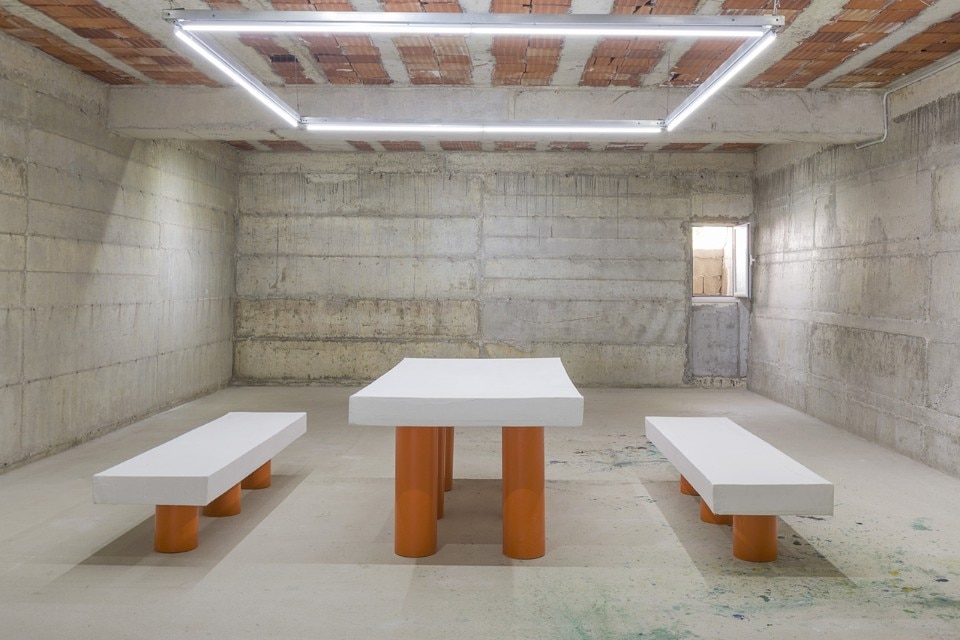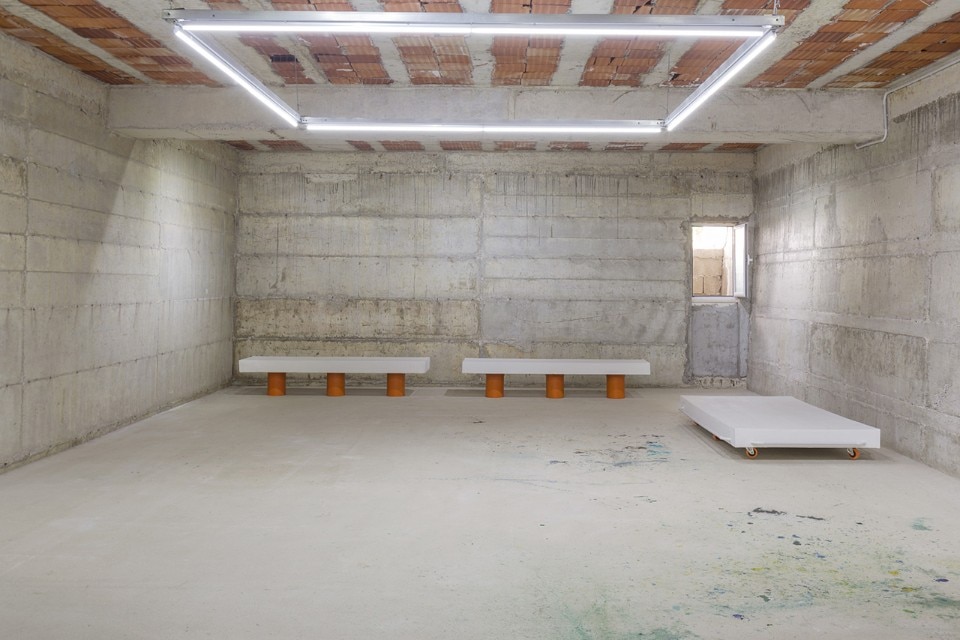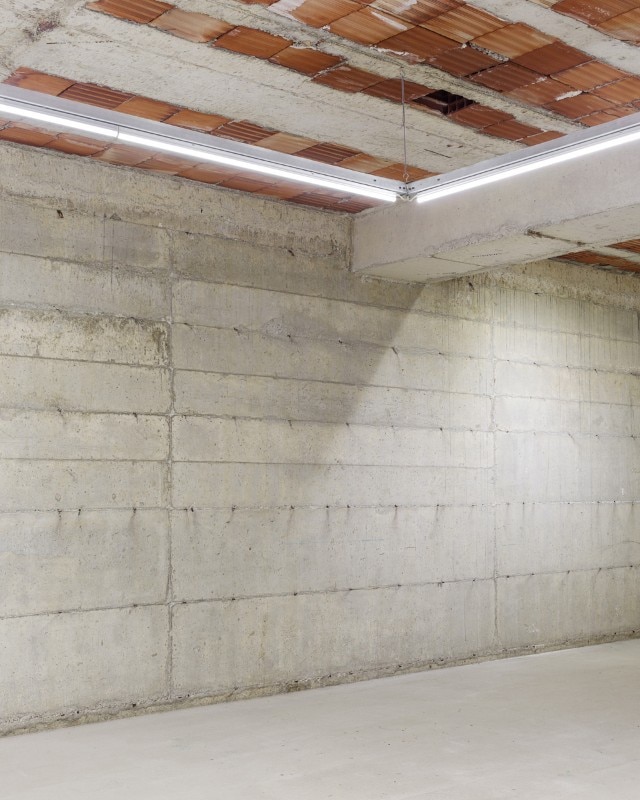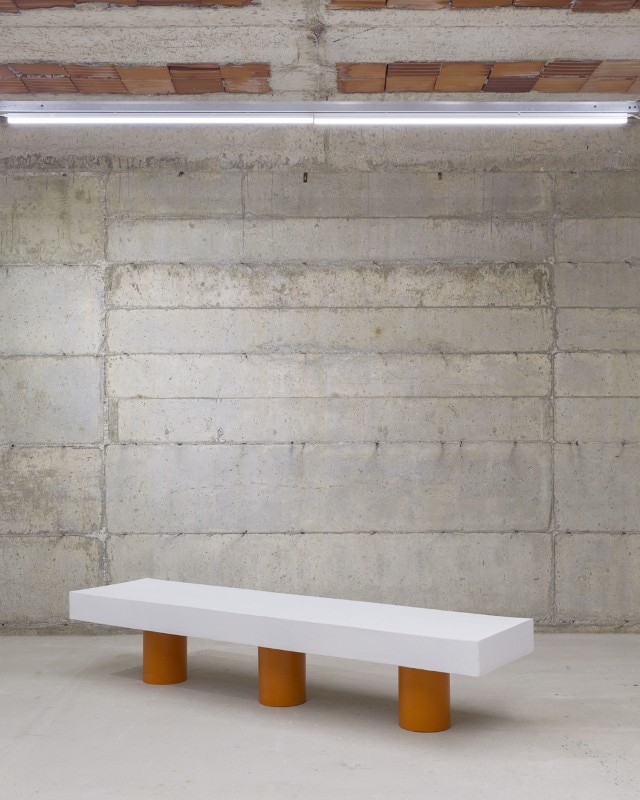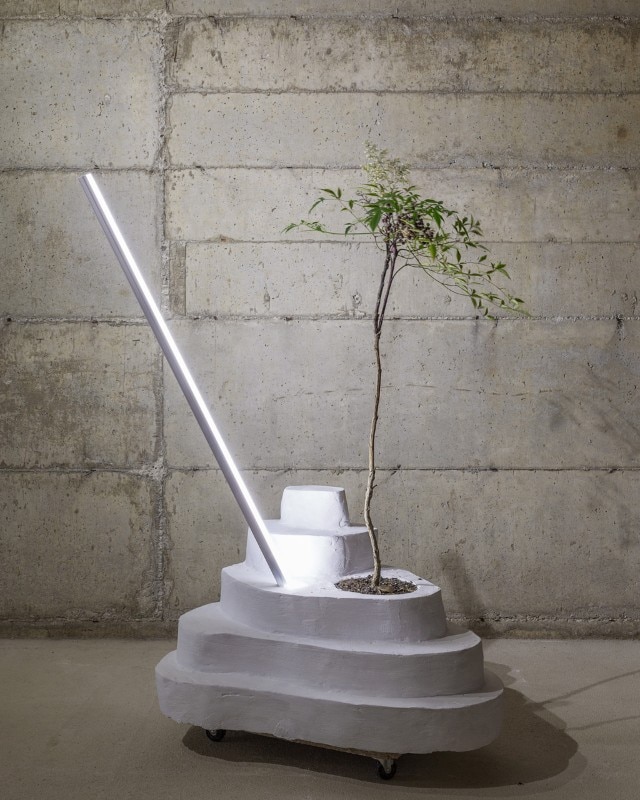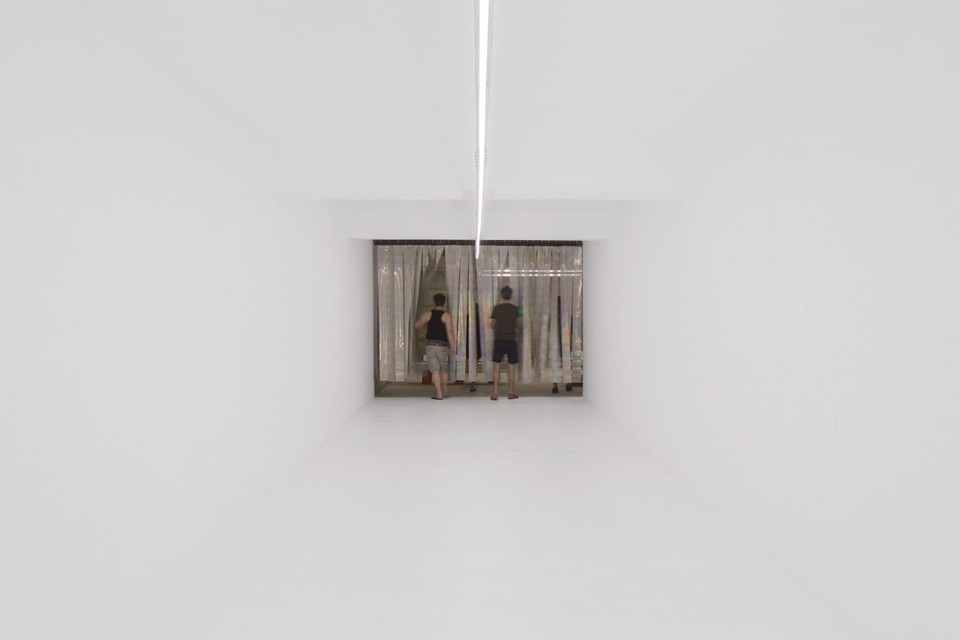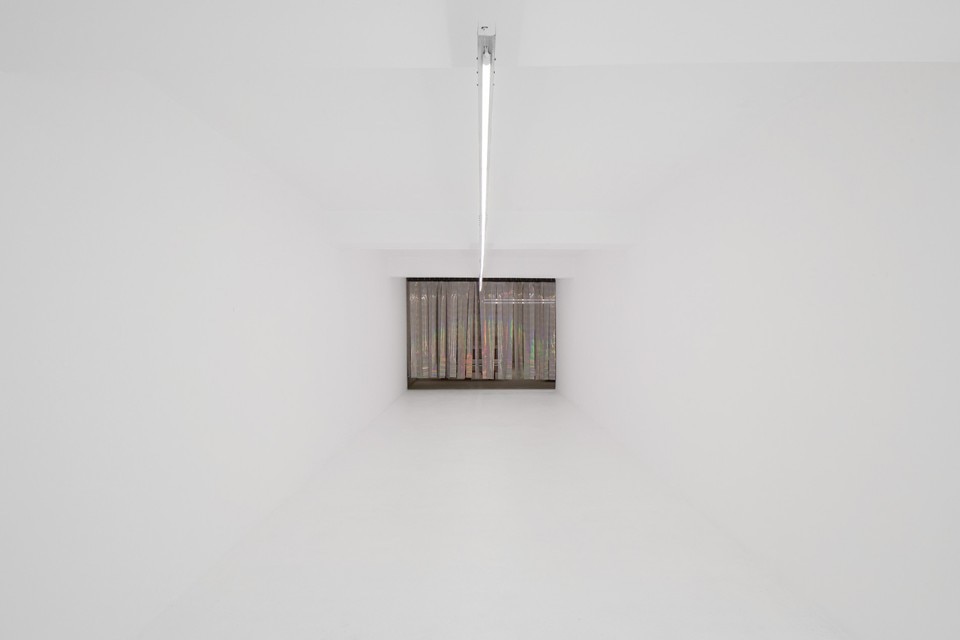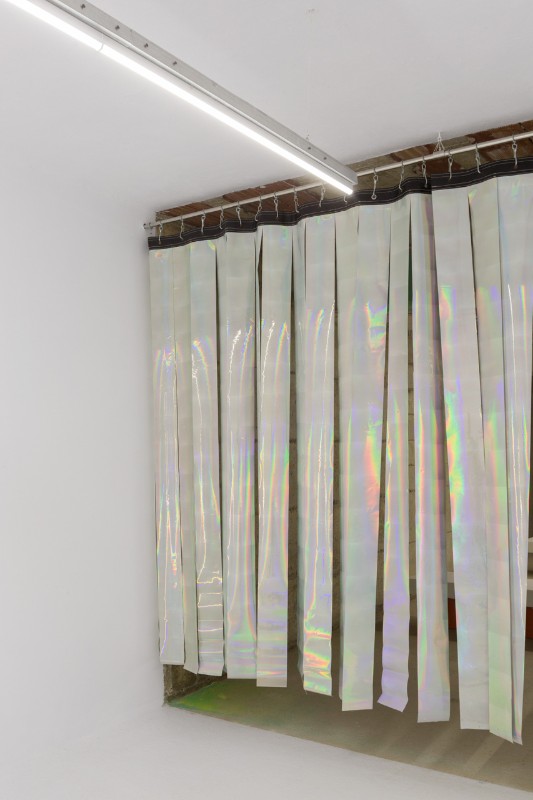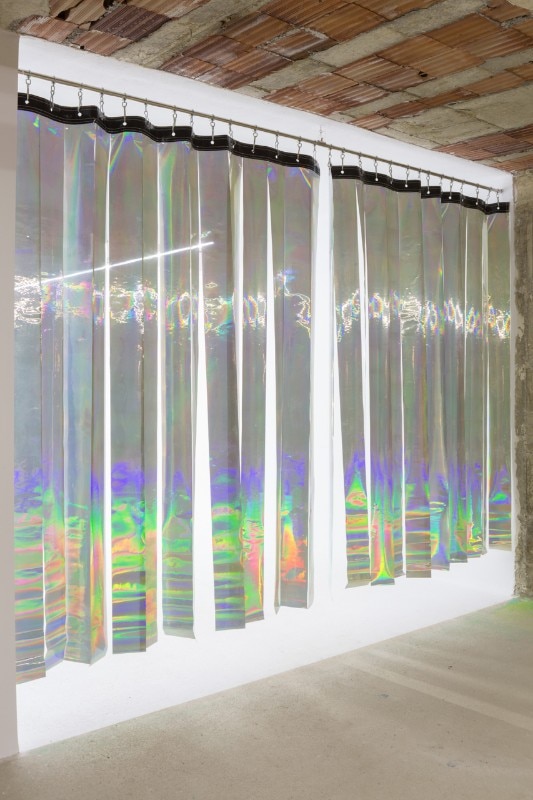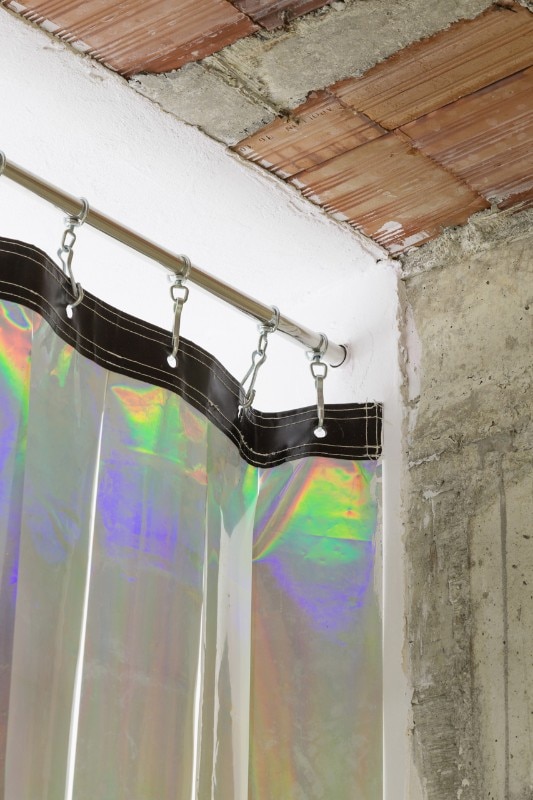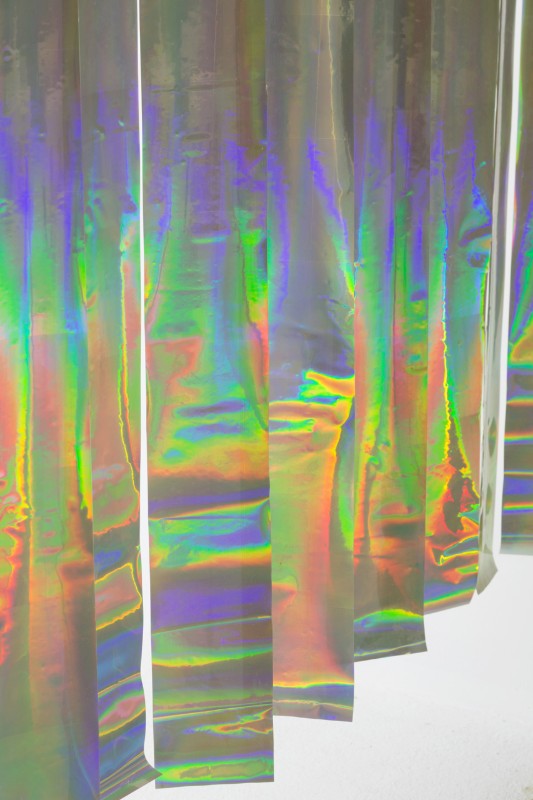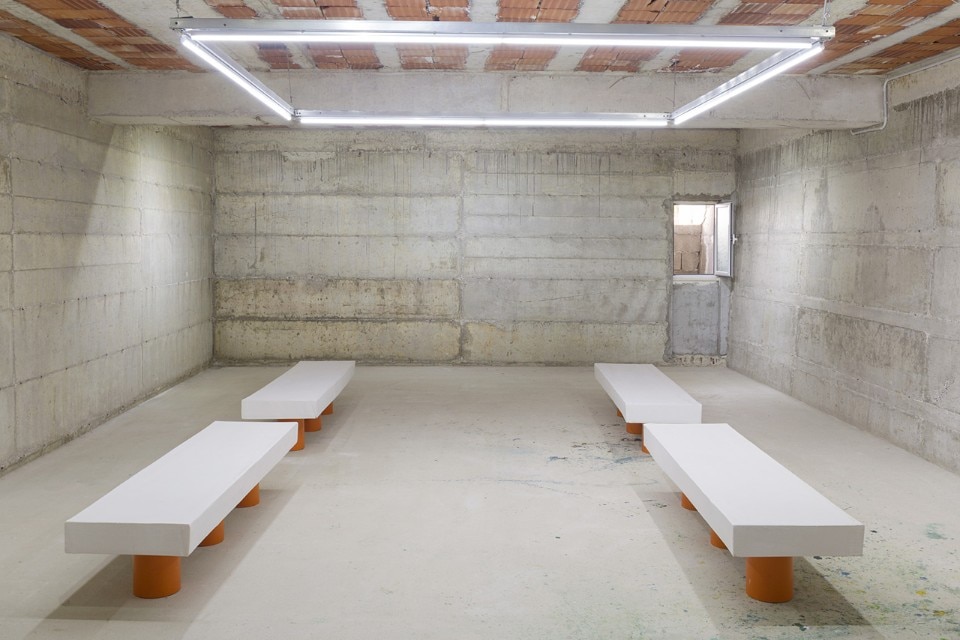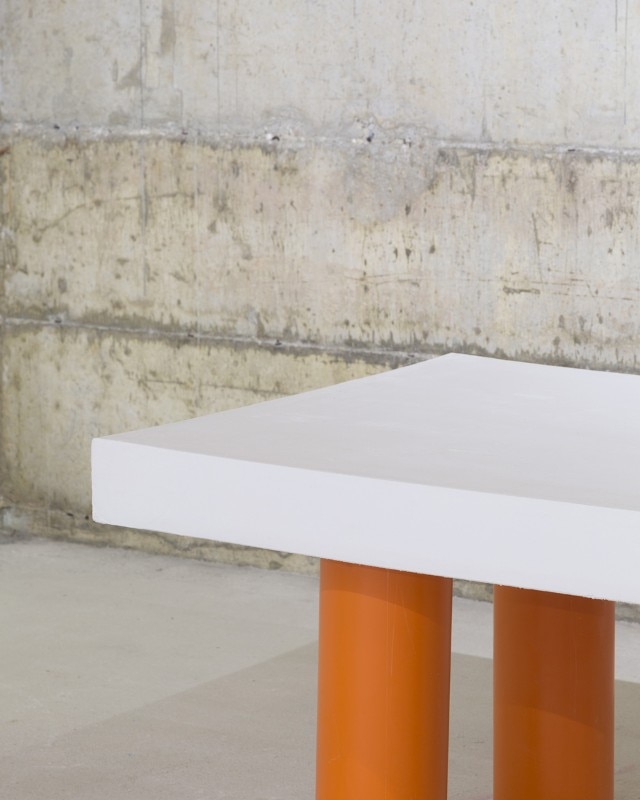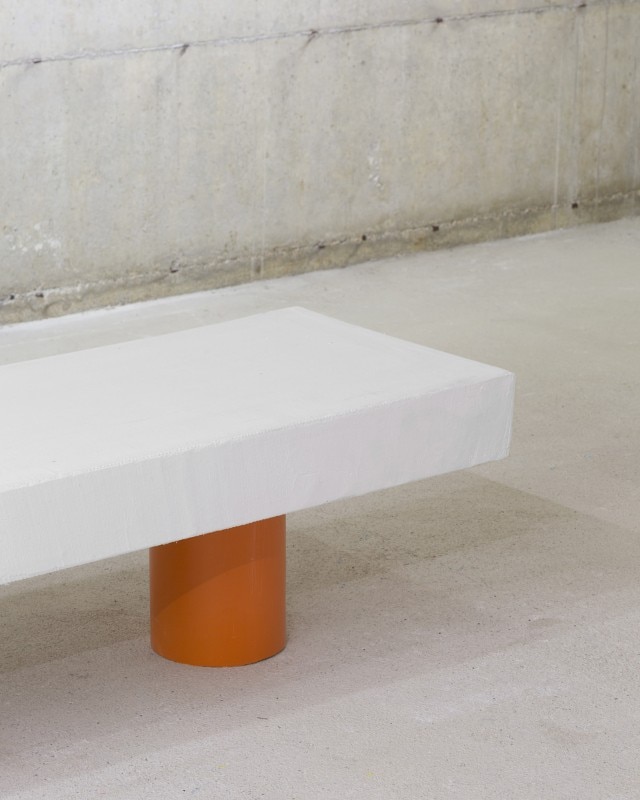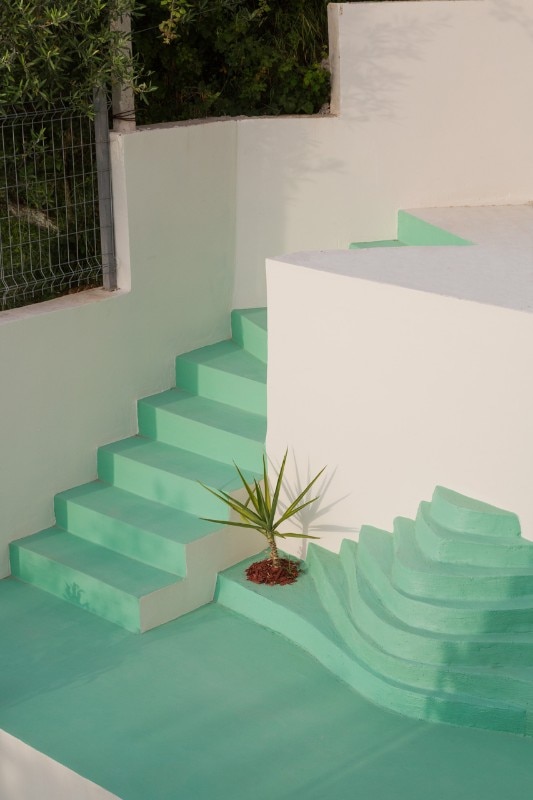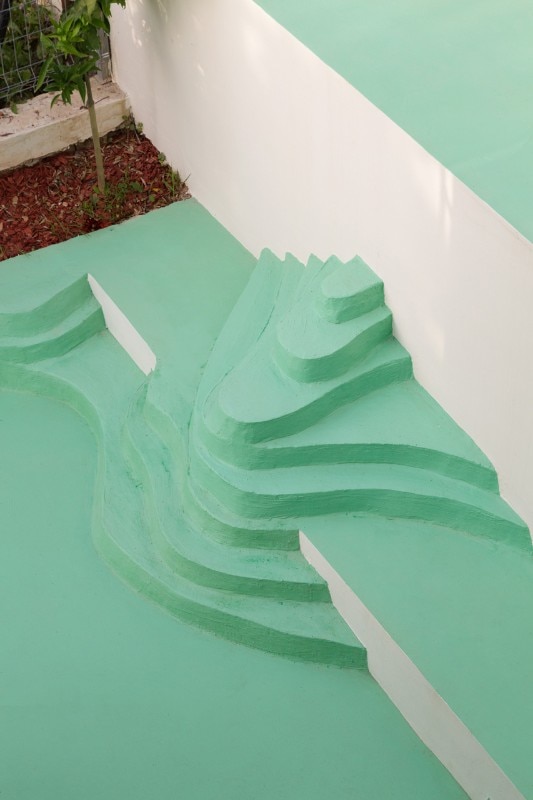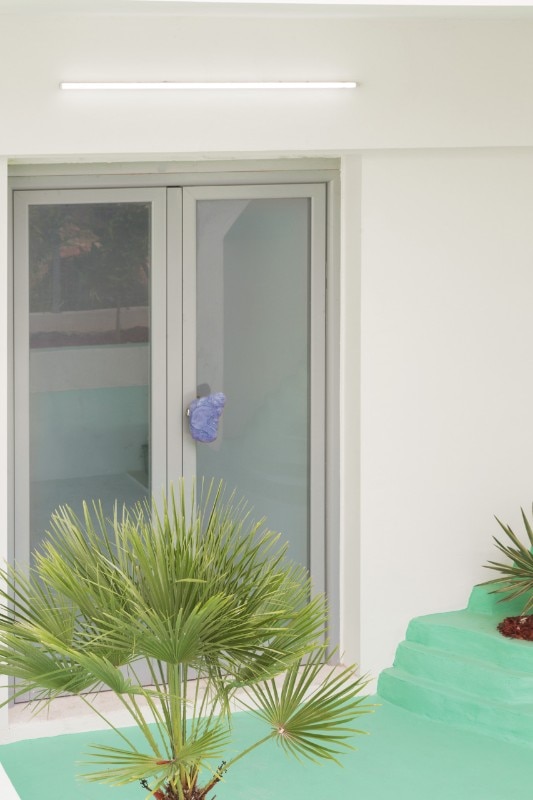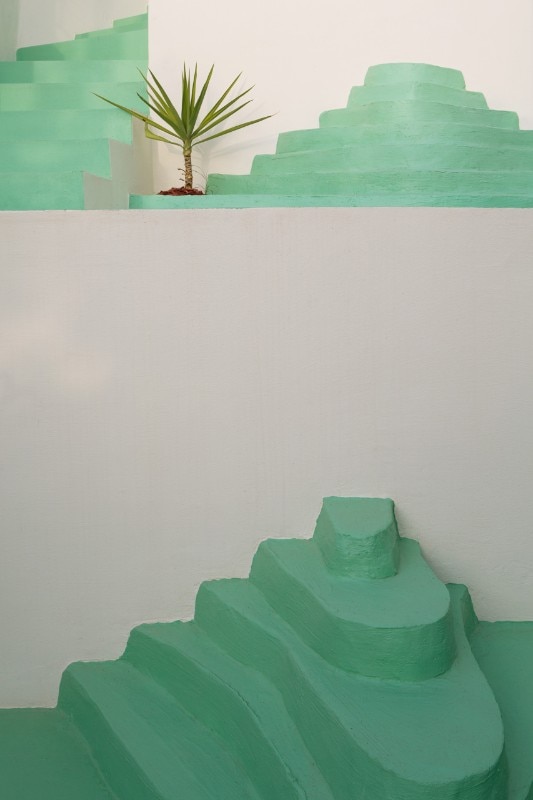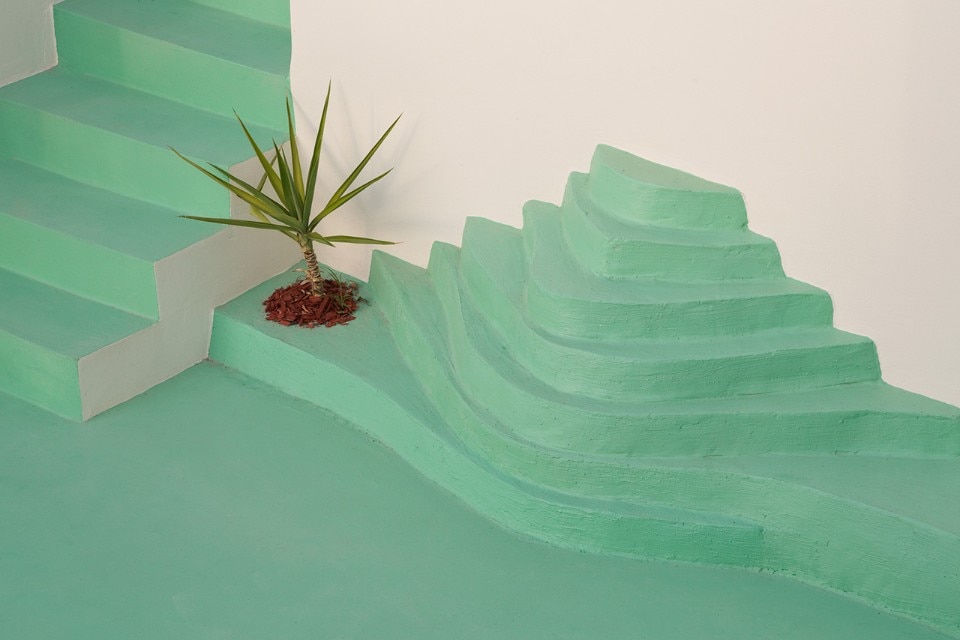Green concrete dunes combine public and stage at the entrance to the Galeria e Bregdetit, the exhibition space designed by Milanese studio Parasite 2.0 in Vlorë, Albania.
The multilevel environment is the first section of a project that is divided into three completely different parts. Once crossed the entrance threshold you enter an elongated and totally white room - taking the concept of the white cube to the extreme - which is marked only by a long neon light that enhances its qualities.
A holographic curtain finally leads to the last room of the gallery, which has been undressed from any finish and decoration. The raw concrete and wrickwork are the protagonists of a space that will be dedicated to performances and large installations.
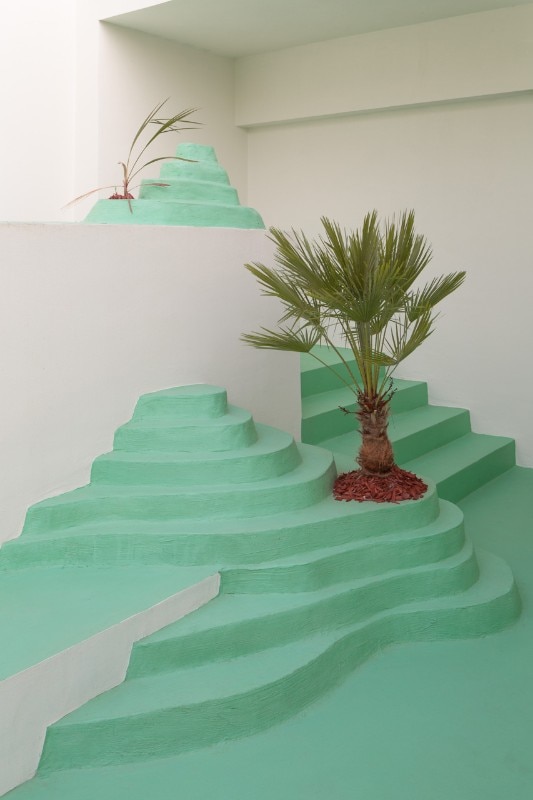
Galeria e Bregdetit is the first permanent project materialising the research on Radical Islands, which Parasite 2.0 has been carrying out since 2014. These are places of retreat, emancipation and free expression for life and for the human habitat.
“For the utopists of the 17th century, the desert is the white canvas for their stories. From Thomas More’s Utopia, to Fénelon’s Adventures of Telemachus or Campanella’s City of the Sun, deserts made of paper were the places in which the authors impressed their new vision of the world and of collective life,” say the three Italian architects.
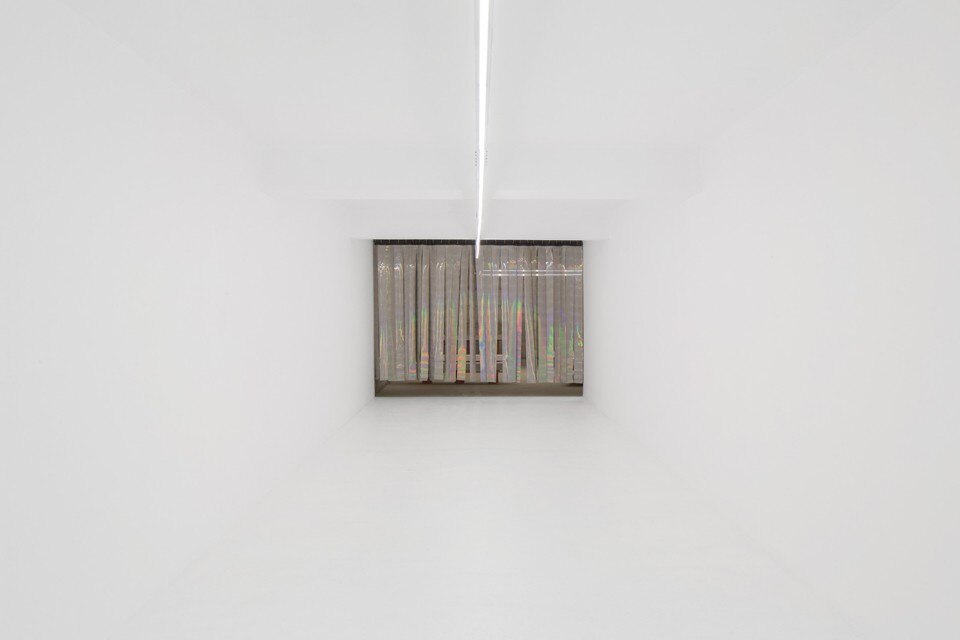
The green desert at the entrance of the gallery is then a fertile ground for Elian Stefa, who will use the space as an outpost for the construction of a new radical island. The Tirana based architect and curator is engaged in a cultural planning project to transform the nearby island of Sazan into a temporary settlement “where creative fields intermix with heritage, nature, and isolation; while preserving the existing structures as a permanent open air museum.”


